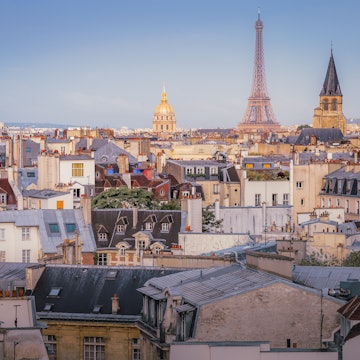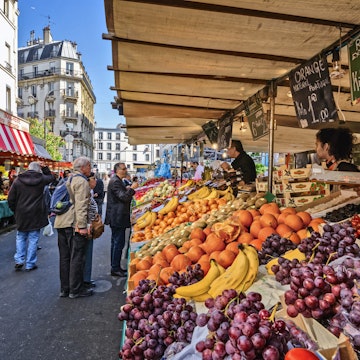
Paris' Left Bank vs Right Bank – which side of the Seine has the best vibe?

Jun 23, 2025 • 8 min read

Left, St-Germain on Paris' Left Bank, Jerome Labouyrie/Shutterstock; Right, Le Marais district on the Right Bank, Amir Hamja for Lonely Planet
One of the biggest decisions any Paris-bound visitor faces, at some point in their trip planning, is which side of the Seine to stay in: the Left (Rive Gauche) or Right Bank (Rive Droite).
It’s a dilemma akin to choosing between a croissant or pain au chocolat. While your choice depends largely on your preference for a sweet or savory breakfast, you can’t really go wrong with either.
That said, there are definite advantages and disadvantages to consider for each. It all comes down to your personal travel style, interests and priorities.
Here’s a primer on how to understand the difference between the Left and Right Banks in Paris – and why this distinction has blurred in light of a more modern geographical division in Paris: East vs West Paris...
Why is it called the Left and Right Bank?
On the map, the Seine River appears to divide the city in more of a north-south axis than a "left or right" split. But the names refer to the direction of the Seines river’s current, which flows westward. When standing downstream, the southern half of the city is located on your left, while the northern half is to your right.
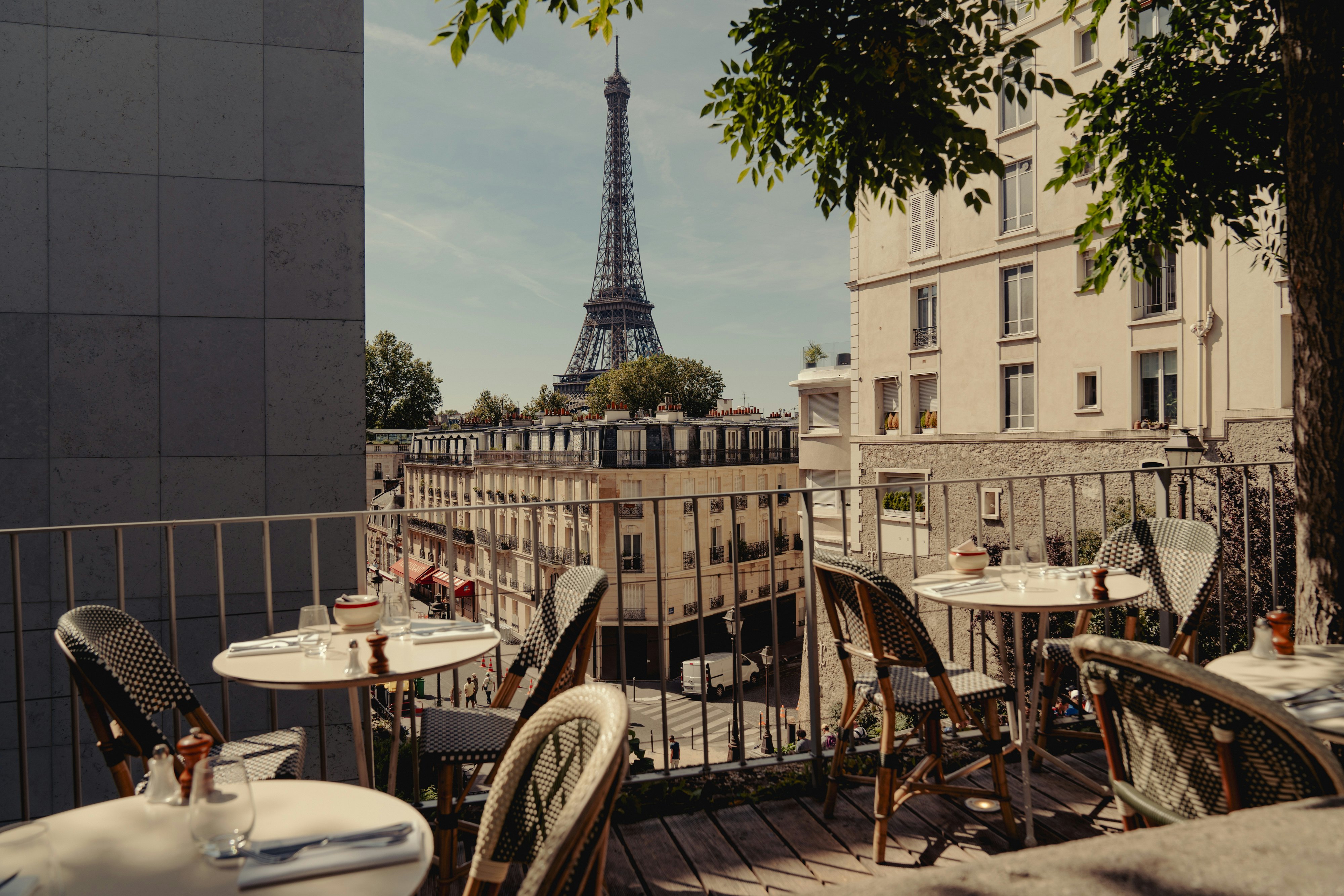
Left Bank: what's the vibe?
If you’re looking for the old-school vibe of postcard picturesque Paris, the kind romanticized on the silver screen by the likes of Audrey Hepburn and Gene Kelly, or in books by the intellectual elite circa Ernest Hemingway and Gertrude Stein, book your home base on the south side of the river, or the Rive Gauche, en français.
Here, the patina of the Left Bank is vintage Paris: narrow cobblestone alleyways, classic, monolithic Haussmanian buildings and elegant wrought-iron balconies, grand old literary cafes, clean, quiet, tree-lined streets and pretty shopfronts.
Neighborhoods like Saint-Germain-des-Prés and Montparnasse once served as the historic HQ of literary and artistic luminaries such as Hemingway, Simone de Beauvoir, Pablo Picasso and Albert Camus. Today, their legacies may have turned the cafes and restaurants where they gathered – Café de Flore, Les Deux Magots, Le Dôme and La Rotonde, to name a few – into high-traffic tourist attractions, but they still carry cachet as nostalgic nods to the past.
Home to La Sorbonne, the oldest university in France founded in the Middle Ages, the Latin Quarter also serves as the intellectual heart of Paris and continues to boast an active student population, while secondhand and specialty bookshops, jazz bars and arthouse cinemas contribute to the Left Bank’s cultural reputation.
Visitors will have no trouble seeking out classic French bistros and upscale brasseries on the Left Bank, as well as sidewalk cafes for indulging in the Parisian sport of people-watching.
Slower-paced and family-friendly, the Left Bank is classic, timeless Paris.
Other notable neighborhoods on the Left Bank include Chinatown and the village-like Buttes aux Cailles, both in the 13th arrondissement.

Major attractions and monuments on the Left Bank include:

A perfect day on the Left Bank
Start your itinerary in the west end and work your way eastwards. First, fuel up with a coffee and pastries at third-wave coffee shop Coutume Café on rue Babylone, or, at one of the legendary literary cafés Les Deux Magots or Café de Flore (yes, they’re touristy, but they’re also an important part of Parisian history), before hitting Le Bon Marché department store and boutiques in the Saint-Germain-des-Prés area.
For lunch, head south to Montparnasse, Paris’s mini-Bretagne, where you’ll find some of the best crêpes in the city.
Then, walk off your meal at either Jardin du Luxembourg or Jardin des Plantes. The Latin Quarter is also nearby, where you’ll want to give yourself time to explore the lovely side streets, open-air booksellers along the Seine, bookshops and the Arènes de Lutèce, ancient Roman ruins that date back to 1 AD.
For a gastronomic dining experience, book a table in advance at the Mediterranean-inspired restaurant Baieta or the Michelin-starred Franco-Japanese restaurant Sola.
And for a glamorous nightcap, head to either Cravan bar or Bar Joséphine at the Mandarin Oriental Lutetia hotel, or end the night at a jazz club like Caveau des Oubliettes.
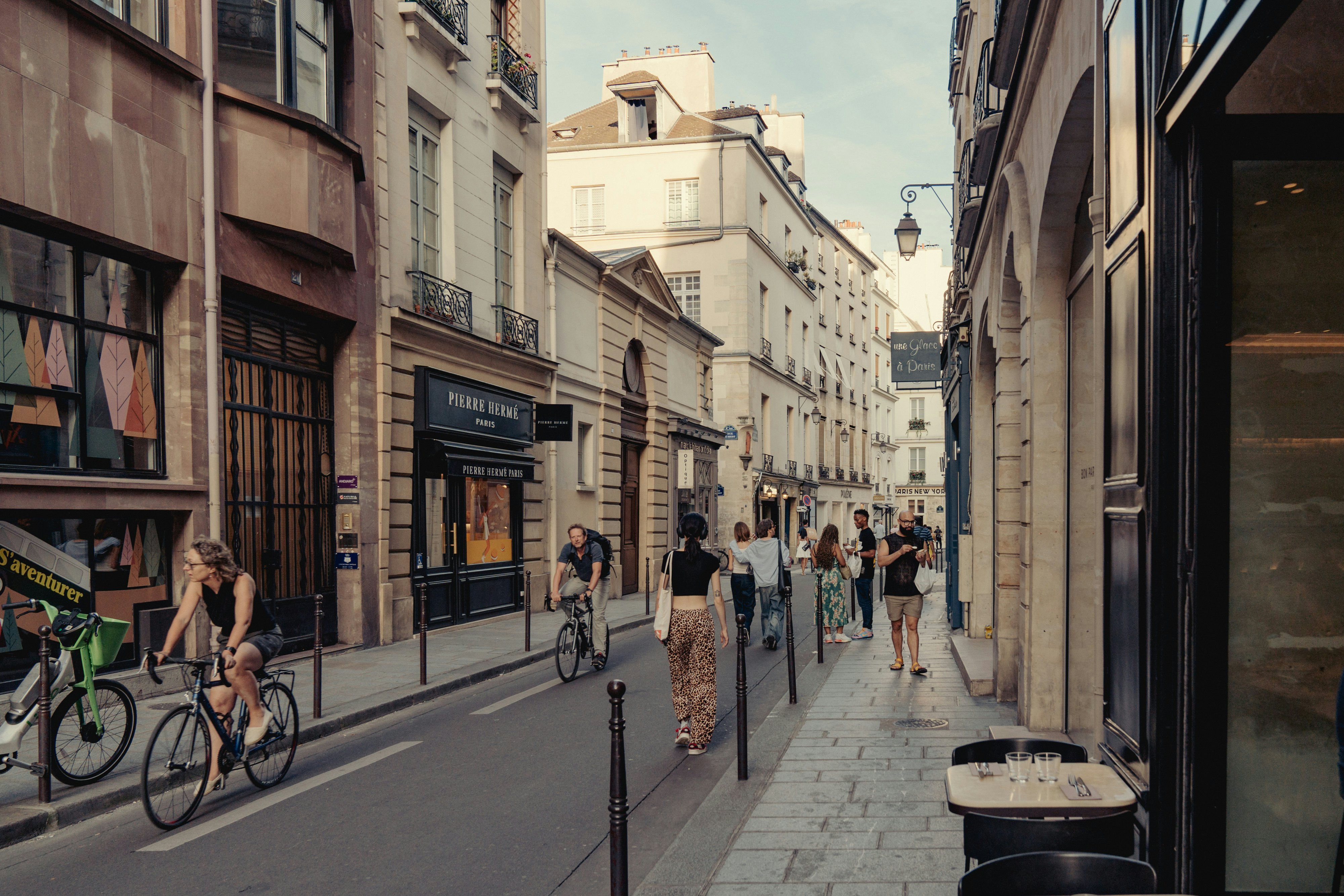
Right Bank: what's the vibe?
Along with being geographically larger and more populous than the Rive Gauche, the Rive Droite (Right Bank) could be described as more diverse, more cosmopolitan and and more fast-paced compared to its neighbor across the Seine.
The patchwork of arrondissements that make up the Right Bank tend to have their own distinct character, be it the artistic spirit of Montmartre to the north with the Moulin Rouge and the Sacré-Coeur Basilica, to the Champs-Élysees to the west and the trendy "bourgeois-bohemian" neighborhood of Canal Saint-Martin to the east.
While the Left Bank is classic Paris chic, the Right Bank thrums with the energy of modern art galleries, natural wine bars, coffee shops, international cuisines, concert venues, independent designers, concept stores, playhouses and a robust nightlife.
Much of this vibe can be found in the Marais, the Jewish and gay quarter, but also in the area around Pigalle, Bastille and the Canal-Saint-Martin.
Historically, the Right Bank has been the center of trade in Paris. And while it’s home to the Paris Stock Exchange and the financial district of La Défense, the Right Bank is also a mix of working class and bourgeois neighborhoods. This divide is split down the middle, with some of the wealthiest Parisians living on the west end of the city, while working class households tend to live on the east.
It’s also the more multicultural of the two halves, with neighborhoods like Little India in the 10th arrondissement, Little Tokyo on rue Saint-Anne, Little Africa in the Goutte d’Or, and two smaller Chinatowns at Arts et Métiers and Belleville.
Shopping on the Right Bank also caters to all kinds of budgets, from high-brow luxury brands around the Champs-Élysées and at department stores like Galeries Lafayette and La Samaritaine, to mainstream shops and secondhand boutiques in the Châtelet area, or concept stores and indie designers in the Marais.
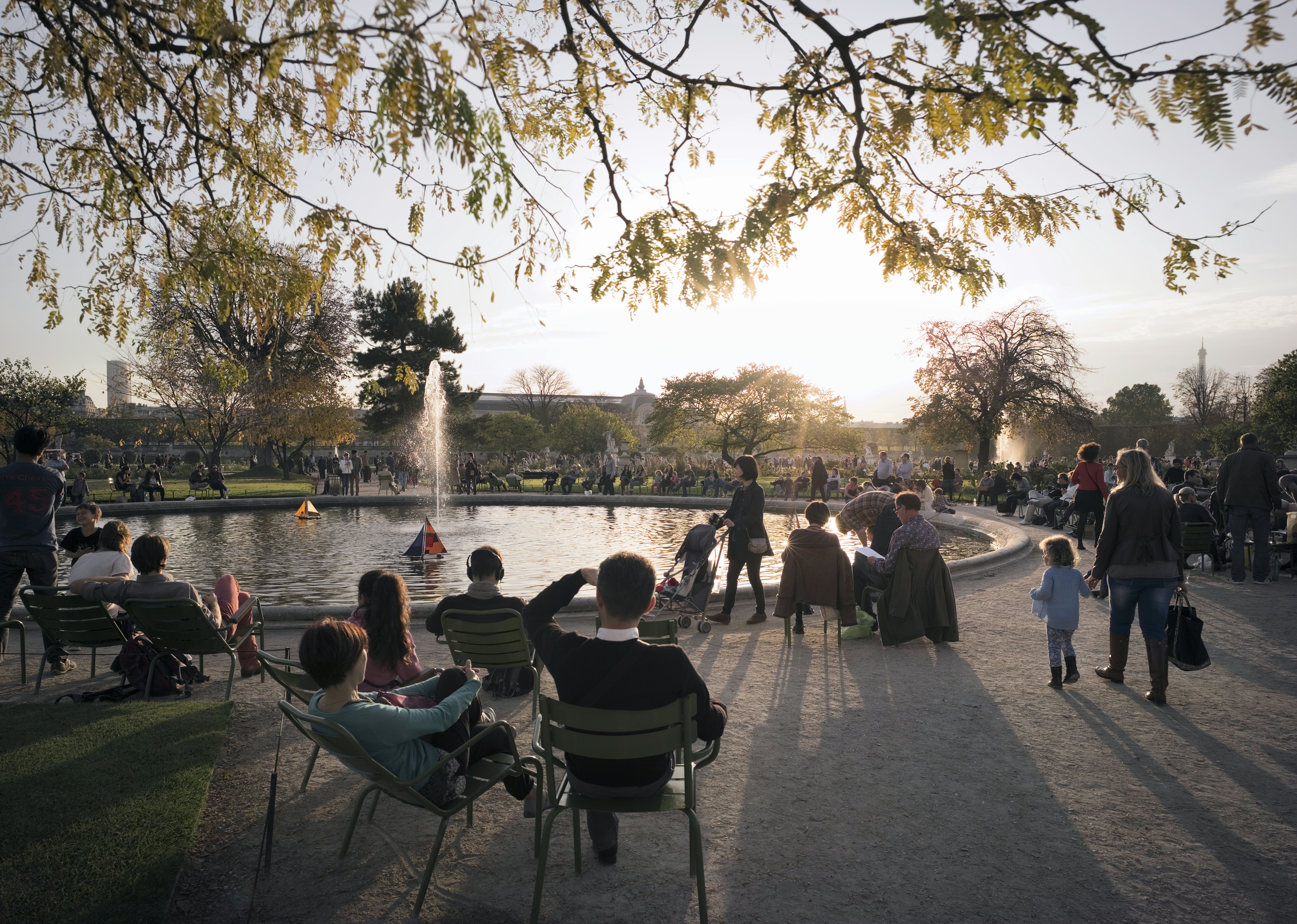
Major attractions and monuments on the Left Bank include:
Centre Pompidou (closing end of September 2025 until 2030)
Grand and Petit Palais
Cabarets Moulin Rouge and Crazy Horse

A perfect day on the Right Bank
It’s overly ambitious and inadvisable to try and pack all of the Right Bank into one day. And while there are lots of ways to tackle the Right Bank, here’s one itinerary that takes you from the center to the eastern pocket of Paris.
Start at the north end of Galeries Vivienne, one of the most beautiful covered passageways in the city, that leads to the Jardin du Palais Royale, also one of the most beautiful gardens on the Right Bank.
There are plenty of caffeine options in this neighborhood, be it coffee (Noir or Lactem), matcha (Matcha Social Club) or tea (Laïzé).
After visiting the garden, head towards rue Saint-Anne where you have no shortage of Japanese and Korean restaurant options for a flavor-packed lunch, be it authentic ramen, udon, bibimbap or Korean BBQ (for that point in the trip when you crave something non-French).
From here, make your way across the city towards Châtelet without neglecting rue Montorgueil, a lively pedestrian-only streetscape lined with cafes, green grocers, and cheesemongers. This will lead you to the Marais and Haut-Marais, where you’ll find some of the city’s best shopping – thrift stores, concept stores and independent designers.
Stay in this neighborhood or decamp towards the Canal Saint-Martin or Oberkampf neighborhoods, where you’ll find some of the city’s most exciting and buzzy dining destinations (Trâm 130, Early June, Le Datcha) for dinner.
End the night at one of the city’s many listening bars in the same area, such as Fréquence and Bambino.

Left Bank vs Right Bank: transportation
Another aspect you may want to consider is that one side of the Seine has more lines and train stations than the other.
Comparatively, the Right Bank has better public transport as it’s served by five major train stations (Gare de l’Est, Nord, Lyon, Saint-Lazare and Bercy) and all 14 metro lines.
The Left Bank has two train stations (Gare de Montparnasse and Gare d’Austerlitz) and nine metro lines.
Paris’s islands
If you’re the type who can’t choose sides, there’s also either Île de la Cité, home of the Notre-Dame Cathedral, or Île Saint-Louis, its sister island upstream which are both located in the middle of the Seine. Accommodation options are sparse given the size of the islands, but the Left and Right Banks are within easy reach.
Village-like arrondissements
A large part of Paris’s charm is the village-like ambience of each arrondissement.
In recent years, city planners have worked to create a 15-minute city, an urban planning concept that aims to make housing, work, healthcare, school, sports and leisure within a short walk or bike ride away.
The model is being replicated in cities around the world, including Ottawa, Barcelona and Shanghai.
As one of the world’s most walkable, and increasingly bikeable, cities in Europe, you’re never very far from a boulangerie, pharmacy, and neighborhood bistro or cafe. And although some arrondissements may be more distinct than others, each neighborhood has its own character and its own appeal, whether it’s on the Left or Right Bank.








